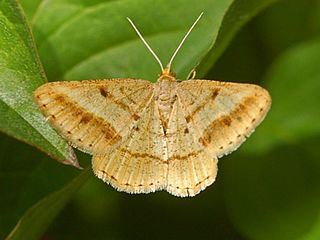
Isturgia is a genus of moths in the family Geometridae described by Jacob Hübner in 1823.
Chilena strigula is a moth of the family Lasiocampidae first described by Francis Walker in 1865. It is found in India and Sri Lanka. Caterpillars are known to feed on Acacia species.

Suana concolor is a moth of the family Lasiocampidae first described by Francis Walker in 1855. It is found in India and Sri Lanka, to South China, Java, Borneo and the Philippines.
Radara subcupralis is a moth of the family Noctuidae first described by Francis Walker in 1866.
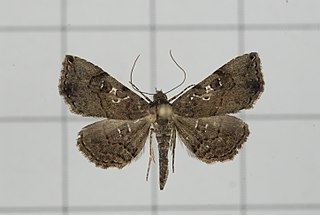
Rhesala imparata is a moth of the family Erebidae first described by Francis Walker in 1865. It is sometimes referred to as an Albizia defoliator. It is found in Sri Lanka, India, Taiwan, Singapore and Borneo.

Anomis mesogona is a moth of the family Erebidae first described by Francis Walker in 1857. It is found in India, Sri Lanka, Somalia and Japan.
Casama vilis is a moth of the family Erebidae first described by Francis Walker in 1865. It is found in Sri Lanka, India, Middle East, Ethiopia, Kenya and Somalia.
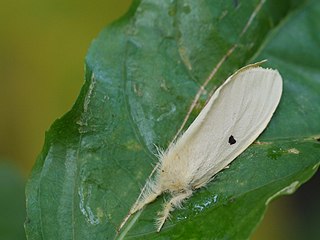
Euproctis lunata, the castor hairy caterpillar, is a moth of the family Erebidae. The species was first described by Francis Walker in 1855. It is found in India, Pakistan, Sri Lanka and Thailand.

Cleora alienaria is a moth of the family Geometridae first described by Francis Walker in 1860. It is found in Sri Lanka, the Indian subregion to the Andaman Islands, Thailand, Sundaland, Taiwan, and Lesser Sundas as far east as Timor and Christmas Island.
Comostola chlorargyra is a moth of the family Geometridae first described by Francis Walker in 1861. It is found in Sri Lanka, the Indian subregion, the Andaman Islands, Borneo, Java, the Philippines, Sulawesi and Australia.
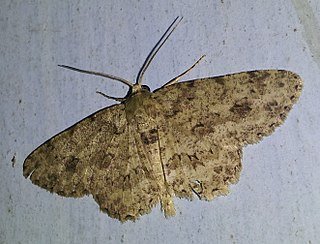
Ectropis bhurmitra, the tea twig caterpillar, is a moth of the family Geometridae. The species was first described by Francis Walker in 1860. A widespread Asian species, it is found around Indo-Australian tropics from India, Sri Lanka and Hong Kong, Taiwan, Thailand, New Guinea to Australian Queensland and the Solomon Islands.
Hypochrosis chlorozonaria is a moth of the family Geometridae first described by Francis Walker in 1860. It is found in Sri Lanka.

Hypomecis transcissa is a moth of the family Geometridae first described by Francis Walker in 1860. It is found in the Indian subregion and from Sri Lanka to Sundaland.
Luxiaria phyllosaria is a moth of the family Geometridae first described by Francis Walker in 1860. It is found in Sri Lanka, the north-eastern Himalayas of India, Sumatra, Borneo, the Philippines and Sulawesi.
Ophthalmitis caritaria is a moth of the family Geometridae first described by Francis Walker in 1860. It is found in Sri Lanka.
Ruttelerona cessaria is a moth of the family Geometridae first described by Francis Walker in 1860. It is found in Sri Lanka and South India.
Scardamia bractearia is a moth of the family Geometridae first described by Francis Walker in 1860. It is found in Sri Lanka.
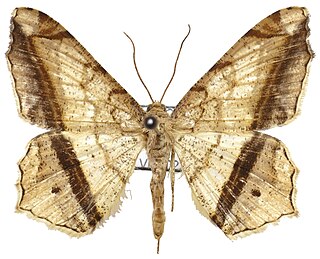
Semiothisa ozararia, is a moth of the family Geometridae first described by Francis Walker in 1860. It is found in the Indian subregion, Sri Lanka, Taiwan, Borneo, Sumatra and Java.
Hypena mandatalis, is a moth of the family Erebidae first described by Francis Walker in 1859. It is found in the Indian subregion, Pakistan, Sri Lanka, Borneo, Sulawesi and Australia.
Selepa celtis, called the hairy caterpillar as a larva, is a moth of the family Nolidae. The species was first described by Frederic Moore in 1858. It is found in Oriental tropics of India, Sri Lanka, Taiwan towards the Ryukyu Islands and Australia.









